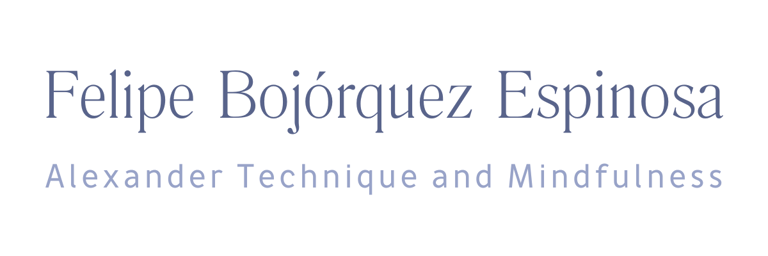Balance as a Sense: How Culture Shapes Our Perception of the World
EDUCATION
Felipe Bojórquez Espinosa
How our perception of the world is shaped by what we learn
Our culture interprets every aspect of our reality. It teaches us that matter is made of atoms, which are like tiny solar systems. It teaches us that thinking happens in our heads and that our brains are essentially computers processing information. It helps us distinguish between what is a “process” and what is not. It teaches us that knowledge is communicated in fragments of information, which we call “facts.” And it teaches us to identify human intelligence as the ability to reason, measurable through an IQ test.
We also learn what to value. Knowledge is considered valuable, for example, while ignorance is seen as a flaw. Often without realizing it, we internalize a system of values that tells us “up” is positive and “down” is negative. Similarly, we understand that heaven is above us in the “good realm,” and we place hell beneath our feet in the “bad realm.” In some circles, the “highest goal” one could aspire to is to “raise” one’s consciousness, because, as we learn to experience it, “up” represents the best.
These facts and values are widely regarded as self-evident in our culture, which makes it difficult to step back and see that each is just a part of the narrative of what it means to be human in our education. More importantly, many of these beliefs are inconsistent with reality, and some are quite harmful.
Lessons from the Anlo-Ewe culture
Let’s start with a clear example from our culture: we are taught that humans have five senses, which most people who went to school can likely name: touch, taste, smell, hearing, and sight (and more have been recently added, though they are not yet part of standard education). As obvious as this seems, it is not a fact but a cultural construction. People educated in other cultures recognize different senses and even have distinct concepts of what senses are. These differences are significant because our senses activate our intelligence. Without senses, we would be incapable of developing it.
If we consider that senses activate our intelligence, then it’s likely that different senses activate it in different ways. As children are educated by their culture about which senses they have, they are, in effect, learning how to pay attention to themselves and the world around them. This shapes how they perceive themselves, how they think, and how they respond to every stimulus they experience as they grow and develop.
The Anlo-Ewe culture of West Africa has an understanding and experience of the senses that differs radically from ours, and the contrast helps us understand how our selection of five senses shapes our experience of self and the world. For example, the Anlo-Ewe consider balance a primary sense and place great emphasis on its development and appreciation. This appreciation extends beyond pure physical skills to include what we might call “balanced behavior in the world” or a “well-balanced personality.”
Anthropologist Kathryn Linn Geurts studied the senses of the Anlo-Ewe and wrote a book titled Culture and the Senses: Bodily Ways of Knowing in an African Community. As she explains, children growing up in this culture learn that balance is “an essential component of what it means to be human.” A person’s balance manifests in the way they stand, walk, and carry objects; it fundamentally expresses who they are: “our character, and our moral strength, are embodied in the way we move, and the way we move embodies an essence of our nature.”
The Anlo-Ewe culture exposes a blind spot in ours. Why don’t we teach balance as a sense? We talk about having a “sense of balance” and we have a sensory organ for balance in our inner ear. So why don’t we teach it as a sense from the start?
The answer points to something essential in the broader narrative of our culture. I am not suggesting this is a conspiracy by some hegemonic group aiming to “control” humanity, far from it. Still, it is interesting to observe that all the senses taught as essential in our education follow the same pattern: a stimulus from the outside world reaches a receptor and gives us information about our surroundings.
The sense of balance and our relationship with the world
All senses emphasized in our education teach us that what happens to us comes from “outside in,” overlooking everything that happens “inside out.” We perceive the world as if our “self” is contained within a boundary.
Balance, however, does not work this way. It imposes no personal boundary. Balance is based on the relationship between our center of gravity and that of Planet Earth. We maintain an aligned relationship between these centers or we fall. Normally, we do this unconsciously, but it is, in fact, a highly sensitive relationship. Standing upright, we can feel how even a slight shift in our body weight alters the alignment with Earth’s center.
Our sense of balance tells us where that center is and our relationship to it. It does not operate through a boundary, nor does a stimulus deliver information from the outside. Instead, we live within Earth’s gravitational field, and that field lives within us. Our sense of balance illuminates this dynamic connection. The very process of balancing presents a model in which the “self” is not confined within limits but oriented in the world through a fluid, felt relationship.
References:
- Geurts, Kathryn Linn. Culture and the Senses: Bodily Ways of Knowing in an African Community. 2002.
Related articles
Well-balanced flutist
Alexander Technique and Mindfulness in everyday musical practice.
Specialized support for high-performance flutists and flute students.
© 2025. All rights reserved. Privacy policy.
Menu:
Lessons
About me
